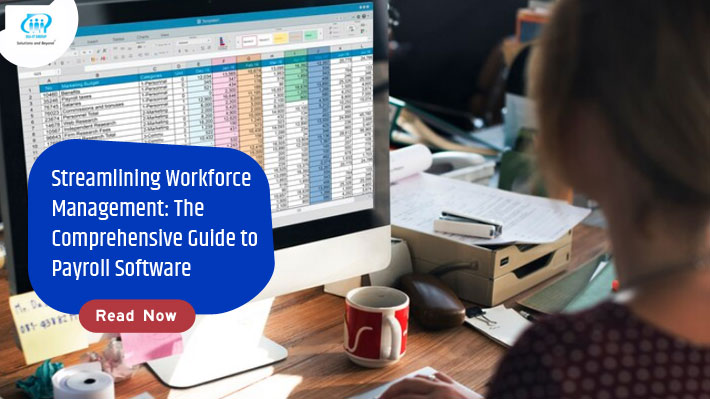In the fast-paced world of business, managing payroll efficiently is crucial for the success and sustainability of any organization. As companies grow, so does the complexity of managing employee compensation, taxes, and compliance. This is where payroll software comes into play, revolutionizing the way businesses handle payroll processes. In this comprehensive guide, we will explore the multifaceted functionalities of payroll software and how it contributes to the seamless functioning of organizations.
Evolution of Payroll Systems:
Before delving into the intricacies of payroll software, it is essential to understand the evolution of payroll systems. Traditionally, payroll processes were manual and labor-intensive, prone to errors and delays. The advent of computers marked the first step towards automation, and over time, dedicated payroll software emerged, transforming the landscape of workforce management.
Core Functions of Payroll Software:
- Salary Calculation and Disbursement:
At its core, payroll software automates the calculation of employee salaries, factoring in various components such as basic pay, overtime, bonuses, and deductions. This ensures accuracy in compensation and timely disbursement of salaries, contributing to employee satisfaction and morale.
- Time and Attendance Tracking:
Payroll software often integrates with time and attendance systems to track employees’ working hours accurately. This feature helps in calculating overtime, leave balances, and other time-related factors, reducing the likelihood of errors associated with manual timekeeping.
- Compliance Management:
Staying compliant with ever-changing labor laws and regulations is a significant challenge for businesses. Payroll software plays a crucial role in ensuring compliance by automatically updating tax tables, staying abreast of legislative changes, and generating reports required for audits and regulatory submissions.
III. Benefits of Payroll Software:
- Time Efficiency:
Automation is the key advantage of payroll software, significantly reducing the time and effort required for payroll processing. What used to take days can now be accomplished within hours, allowing HR professionals and payroll administrators to focus on more strategic tasks.
- Error Reduction:
Manual payroll processes are prone to errors, which can lead to financial discrepancies and employee dissatisfaction. Payroll software minimizes errors by automating calculations and providing validation checks, resulting in accurate and reliable payroll processing.
- Cost Savings:
While there is an initial investment in implementing payroll software, the long-term cost savings are substantial. Automated processes reduce the need for a large workforce dedicated to payroll management, and the risk of costly errors is minimized, contributing to overall financial efficiency.
- Enhanced Data Security:
Payroll data is sensitive and must be handled with utmost security. Payroll software employs robust security measures, including encryption and access controls, to safeguard confidential employee information from unauthorized access or breaches.
Features of Modern Payroll Software:
- Employee Self-Service Portals:
Many payroll software solutions offer self-service portals, allowing employees to access their pay stubs, tax forms, and other relevant information online. This empowers employees, reduces administrative tasks, and enhances transparency in payroll processes.
- Mobile Accessibility:
In an era of remote work and mobility, payroll software with mobile accessibility enables HR professionals and employees to manage payroll-related tasks on the go. Mobile apps provide flexibility and convenience, ensuring that payroll processes are not hindered by physical location.
- Analytics and Reporting:
Advanced payroll software comes equipped with analytics and reporting tools, enabling organizations to gain valuable insights into their payroll data. Customizable reports help in decision-making, budgeting, and forecasting, providing a strategic edge in workforce management.
- Integration with Other HR Systems:
To create a seamless and integrated HR ecosystem, modern payroll software often integrates with other HR systems, such as human resource management (HRM) and time and attendance systems. This ensures a cohesive approach to workforce management and eliminates data silos.
Choosing the Right Payroll Software:
- Scalability:
The chosen payroll software should be scalable to accommodate the growing needs of the organization. Whether it’s an expanding workforce, changing tax regulations, or evolving business requirements, the software should be able to adapt and scale accordingly.
- User-Friendly Interface:
An intuitive and user-friendly interface is crucial for the effective utilization of payroll software. HR professionals and administrators should be able to navigate the system effortlessly, minimizing the learning curve and optimizing productivity.
- Compliance Updates:
Given the dynamic nature of laws and regulations, the payroll software should provide regular updates to ensure ongoing compliance. The software vendor’s commitment to staying abreast of legislative changes is critical in avoiding legal issues and penalties.
- Customer Support and Training:
Effective customer support and training are essential elements of a successful payroll software implementation. A reliable support system ensures that any issues or queries are addressed promptly, and comprehensive training programs empower users to make the most of the software’s capabilities.
Conclusion:
In conclusion, payroll software has evolved into a pivotal tool for organizations aiming to streamline their workforce management processes. From automating salary calculations and tax withholdings to enhancing data security and providing advanced analytics, the functionalities of payroll software are diverse and impactful. As businesses continue to navigate the complexities of managing a dynamic workforce, investing in the right payroll software becomes not only a necessity but a strategic imperative for sustained success.
